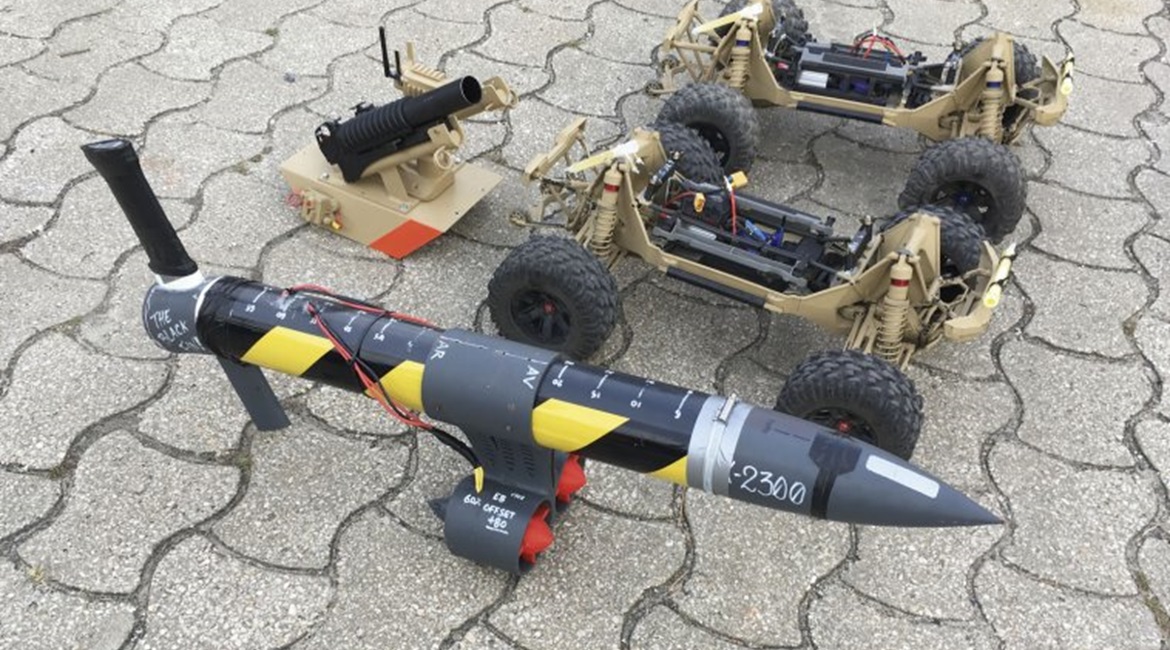
The Portuguese Navy revealed the existence of the Unmanned Vehicle Experimentation Cell (Célula Experimentação Operacional de Veículos Não Tripulados: CEOV), dubbed Q-branch, during the ‘Recognised Environmental Picture Maritime Unmanned Systems’ (‘REPMUS’) exercise being held on Portugal’s Troia Peninsula on 11–27 September.

The Portuguese Navy’s CEOV has kit including the Blackfin autonomous UUV and a pair of toy remote control cars modified to carry grenade launchers and cameras. (IHS Markit/James Rands)
The team was set up in 2017 and while not secret had not been advertised prior to ‘REPMUS’. It numbers less than a dozen technically minded naval personnel of all ranks and varied experience under the command of Lieutenant Tiago Mendes. All personnel have an enthusiasm for engineering and technology. The unit reports directly to Fleet Commander Vice Admiral Gouveia e Melo and is tasked exclusively by him.
Vice Adm Melo said the main motivation for the team is “to fight asymmetric threats with asymmetric thinking”. Citing Martec’s law that technology changes exponentially while organisations transform logarithmically, Lt Mendes explained that procurement of new and emerging technologies was routinely too slow to procure cutting edge kit or exploit new uses of existing technology. This left navies in the position of every sailor having a phone in his or her pocket with more processing power than the ship on which he or she was embarked. Smaller, more agile teams unburdened by organisational inertia (for example terrorists) could exploit advances in technology faster and in less stereotyped ways. Exploring the asymmetric potential of technology enables the unit to predict what an irregular adversary could do and thus pre-emptively develop countermeasures. Lt Mendes said, “We’re like the flu vaccine; we don’t do the change, we start the process.”
Looking to read the full article?
Gain unlimited access to Janes news and more...






